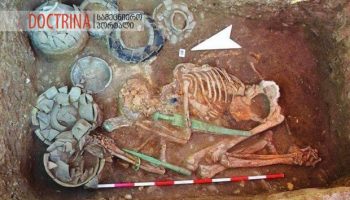The researchers transplanted the cerebral cortex nerve cells received from skin cells to a rat brain damaged by a stroke, after which the rodents’ motor function was partially restored and these cells were fully integrated into the damaged nerve arc. The study, published in the prestigious American scientific journal PNAS, was conducted in the laboratory of Zaal Kokaia, a Georgian scientist working in Sweden.
“Six months after the transplantation, we saw how the new cells repaired the damaged rat’s brain,” said Zaal Kokaia, who co-authored the study with Professor Ole Lindwall and postdoctoral researcher Sarah Palma-Torto.
A team of researchers working in the Swedish city of Lund has shown in previous studies that it is quite possible to transplant neurons from human stem and reprogrammed cells into infected rats. However, previous studies have not described whether transplanted cells could strike new connections in the brain of rats, who have had a stroke, and thus restore normal motor and sensory functions.
“Using numerous methods, including electron microscopy and molecular methods based on the rabies virus, we observed the transplanted cells and showed that they were successfully integrated into the damaged nerve arcs. In addition, we also found that transplanted cells made connections with neurons in the second hemisphere of the brain, where no cells have been transplanted, ”said Zaal Kokaia, who was amazed by the findings.
The researchers converted human skin cells into brain cells in a laboratory and then transplanted them into the cerebral cortex of rats. This is the region of the brain that is most often damaged after a stroke.
“Our goal is to understand how transplanted cells affect the second hemisphere of the brain. We also want to better observe how transplantation affects cognitive functions such as, for example, memory. We will, of course, study all the side effects as well. The first requirement for the clinical use of cell transplantation is efficiency and safety, ”said Zaal Kokaia.
Zaal Kokaia has been director of the Stem Cell Center in Lund since 2011 and is also a professor of experimental medical research at Lund University, Head of the Laboratory of Stem Cells and Restorative Neurology, and a coordinator of the Strategic Research Program at StemTherapy Stem Cells and Regenerative Medicine.
The key topic in Zaal Kokaia’s research is a stroke and the study of the ways in which stem cells and reprogrammed cells can be used to restore damaged brain function. Nowadays, a physical exercise is considered the only way for motor recovery following stroke.
In a 2017 interview with the Swedish Brain Foundation, the Georgian scientist said he was optimistic about the clinical use of stem and reprogrammed cells and predicted a great future for this approach.
“We know that stem cells have great potential, first and foremost because they have the ability to replace damaged cells. At the same time, they produce a variety of substances and factors that allow nerve cells surrounding the stem cells, which survive after a stroke, to work better and manage regenerate and repair processes more efficiently, ”said Zaal Kokaia.
The Hall of Young Scientists & Analysts – “Doctrina”







